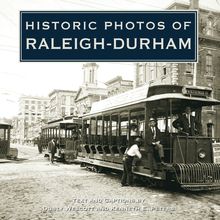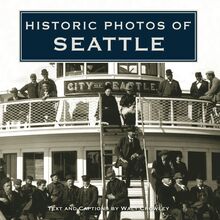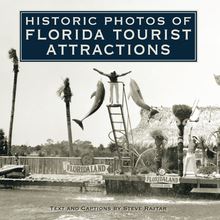Historic Photos of Florida Ghost Towns , livre ebook
196
pages
English
Ebooks
2010
Vous pourrez modifier la taille du texte de cet ouvrage
Obtenez un accès à la bibliothèque pour le consulter en ligne En savoir plus
Découvre YouScribe en t'inscrivant gratuitement
Découvre YouScribe en t'inscrivant gratuitement
196
pages
English
Ebooks
2010
Vous pourrez modifier la taille du texte de cet ouvrage
Obtenez un accès à la bibliothèque pour le consulter en ligne En savoir plus
Publié par
Date de parution
01 janvier 2010
Nombre de lectures
0
EAN13
9781618583949
Langue
English
Poids de l'ouvrage
6 Mo
Publié par
Date de parution
01 janvier 2010
Nombre de lectures
0
EAN13
9781618583949
Langue
English
Poids de l'ouvrage
6 Mo
HISTORIC PHOTOS OF
FLORIDA
GHOST TOWNS
T EXT AND C APTIONS BY S TEVE R AJTAR
In 1916, two Harvard University chemical engineers testing the beaches along Florida s east coast found useful minerals at this location. This photo from around 1927 shows the Buckman and Prichard Incorporated ilmenite mill located in Mineral City, founded in St. Johns County in 1916. After extraction of the ilmenite (titanium ore), the tailings would then be worked for the extraction of rutile, zircon, monazite, and silicate. During World War II, the federal government took over the area and used the minerals in the production of munitions. The area is now an upscale tourist resort with a focus on golf, known as Ponte Vedra Beach. The mining company, National Lead Company, created the area s first golf courses for recreation of its employees.
HISTORIC PHOTOS OF
FLORIDA
GHOST TOWNS
Turner Publishing Company
200 4th Avenue North Suite 950
Nashville, Tennessee 37219
(615) 255-2665
www.turnerpublishing.com
Historic Photos of Florida Ghost Towns
Copyright 2010 Turner Publishing Company
All rights reserved.
This book or any part thereof may not be reproduced or transmitted in any form or by any means, electronic or mechanical, including photocopying, recording, or by any information storage and retrieval system, without permission in writing from the publisher.
Library of Congress Control Number: 2009933002
ISBN: 978-1-59652-552-8
Printed in China
10 11 12 13 14 15 16 17-0 9 8 7 6 5 4 3 2 1
C ONTENTS
A CKNOWLEDGMENTS
P REFACE
C OMPANY C LOSINGS
P LANTATION D ECLINES
B LAME I T ON THE R AILROAD
G OVERNMENT I NVOLVEMENT
D ISASTROUS W EATHER
F IRES
J UST F ADED A WAY
A BSORBED BY A NOTHER C ITY
N OTES ON THE P HOTOGRAPHS
B IBLIOGRAPHY
Enterprise Junction was located in Volusia County at the junction of Indian River Division railroad tracks owned by Luther Caldwell and Elijah Watson. Today it is found approximately at the intersection of Benson Junction Road and Shell Road, southwest of DeBary. In 1925, the Ox Brush Fibre Company moved there from Sanford, where it had operated since 1884. For a time, it was the country s largest manufacturer of brushes, making them from palmetto fibers. In addition to the manufacturing plant, the company had 17 houses for its employees, a post office named Benson Junction, and stores. The business closed down during the 1970s.
A CKNOWLEDGMENTS
This volume, Historic Photos of Florida Ghost Towns , is the result of the cooperation and efforts of many individuals and organizations. It is with great thanks that we acknowledge the valuable contribution of the Florida State Archives, and the many photographers and collectors who have shared their images of the state by donating them to the Florida Photographic Collection.
We would also like to thank those who seek out the communities that no longer exist, providing valuable resources for historians, genealogists, and those who just want to see how our predecessors lived. In particular, we would like to recognize the contributions of Jim Pike, Mike Woodfin, and all of the other contributors to GhostTowns.com .
With the exception of touching up imperfections that have accrued with the passage of time and cropping where necessary, no changes have been made to the photographs. The focus and clarity of many photographs is limited to the technology and the ability of the photographer at the time they were taken.
P REFACE
When most people think of a ghost town, they conjure up an image of a dusty group of dilapidated wooden buildings in the Old West. Tumbleweeds roll down the street. Hinged doors of a saloon flap noisily in the wind. Broken windows, empty wooden sidewalks, and perhaps a drifter on horseback passing through complete what Hollywood has led us to believe is a ghost town.
Although such an abandoned area would certainly fit anyone s definition of a ghost town, many other scenarios also qualify. Various criteria for identifying these towns have been developed over the years, and to better understand the scope of this work, it is necessary to know the criteria used in selecting the Florida ghost towns from the large number of settlements that existed, but are no more.
The town must have had a reason to exist as a community. Often, it was established to support a single company or a single industry, or perhaps a group of farms located near one another. It may have sprung up as a shipping point along a waterway or railroad line, or may have started as a camp for workers laying track or building a bridge. In some cases, towns originated as military forts or as supporting residences, stores, and businesses just outside their gates.
After establishment, the town must have had a period of growth. It may have been a rapid boom period or a gradual increase in population, but in any event, there must have been growth. If the town could not attract people to work in the local industry, operate stores, pastor churches, or provide the services needed in any viable community, it wasn t really a town to begin with.
The next important phase needed for a town to evolve into a ghost town, of course, is a decrease in population. It must be a substantial decrease in that there must be too few left to maintain a real sense of community. It may be the result of an obvious event such as a hurricane or massacre or epidemic. It may be a consequence of something identifiable but less immediate, such as the gradual departure of residents following a factory or mine closing, the rerouting of a railroad, or competition with another nearby town that was better at attracting residents. It may also be less obvious, with people leaving for other destinations for a variety of reasons, or no specific reason at all.
Finally, the formerly thriving town should not be there anymore, whether the site now has ruins of buildings, nothing at all recognizable as a human residence, or is a modern city bearing no resemblance to the former town. Basically, if there used to be a town there, and it s no longer there, it s a ghost town. If its history is documented in words and pictures, it may be one included in this volume.
Unlike the movie ghost towns of the Old West, those in Florida rarely have wooden sidewalks, swinging saloon doors, or anything else constructed of wood. It doesn t take long in Florida for unmaintained wooden structures to disappear: they are ravaged by termites, carried away by winds and floods, and reduced to ashes by frequent fires. Rather than being preserved by a dry climate as in cowboy movies, abandoned wooden towns in Florida quickly revert to palmettos and pines. Therefore, unless the abandonment of a town is fairly recent, what survives at Florida ghost town sites is generally made of other material, such as stone foundations, brick walls, or marble gravestones. Wood will be no more than a memory, with the possible exception of that treated with creosote or other chemical preservatives.
There are many reasons a town loses its population and its raison d tre. Often, an area settled to support a single company or a single industry will pass into memory not long after that company or activity ceases. In several instances, when a company closed, it not only terminated the town but also gave its residents deadlines by which they would be required to purchase and move their homes, or else demolition crews would eliminate them. Similarly, the decline of plantations as viable crop producers took away the necessity for nearby supporting settlements.
Railroads and governments have played major roles in creating ghost towns. Where a train track is placed, or where it is moved to, bears strongly on where a successful town can lie. When a government dissolves a town s charter, or acquires the land on which it sits for a public purpose, the town will often quickly disappear.
Other ways of rapidly converting a thriving settlement into a ghost town include fires, floods, hurricanes, and epidemics. More often, however, a town merely fades away over a period of time without a single drastic event. Perhaps the town loses its will to exist because its crops lose their demand, other regions of the state become more popular, or for no easily definable reason.
The final category covered herein is that the old town has lost out to another. Some examples arise from economic competition with another, with the stronger one winding up with the residents and businesses of both. Others are merely absorbed by nearby towns, and what used to be a distinct historical town is transformed into a mere neighborhood within the city limits of another, which grew amoeba-like and swallowed up its surroundings and made them parts of itself.
Merely because a place is called a ghost town does not mean that there are no living residents. On the contrary, someone may be reading this at their home in one of the ghost towns described in this book. It s not the absence of people that qualifies an area to be called a ghost town. It is instead the drastic change from what the town used to be when it thrived to what it is today. In essence, it s a completely different town than it was. Florida has hundreds or thousands of such ghost towns, fascinating those who strive to imagine what used to be.
-Steve Rajtar
Christina was a small town along the west side of the railroad tracks, across from the Polk County phosphate mines. It originated out of the Land Pebble Phosphate Company operation near the D. M. Pipkin homestead. Its post office remained open from 1908 until 1918, when mail service was moved to Lakeland. Initially a town for black laborers, it still has its name on Christina Lake, Christina Drive, and Christina Park Road, east of the railroad tracks. The few homes remaining west of the tracks are in an area of greater Lakeland labeled on some maps as Tancrede. The town was first named Medulla Mine by C. G. Memminger, who later renamed it for his only daughter. It














